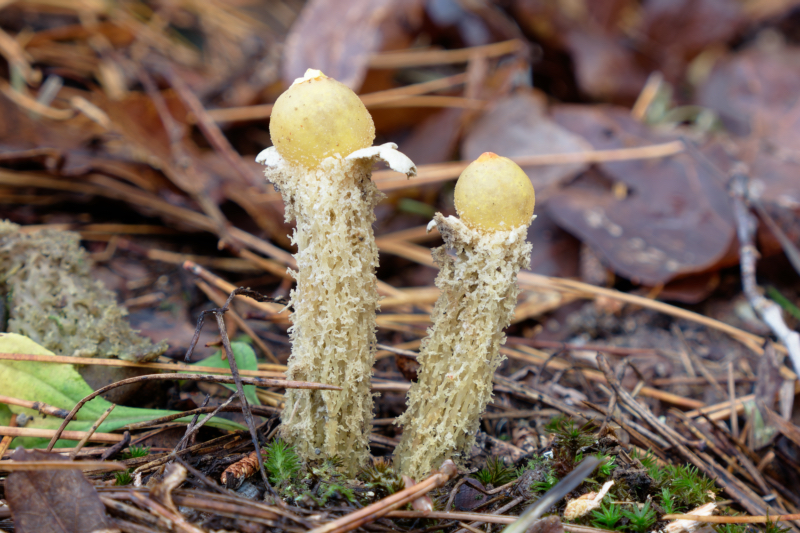While hiking in the Ouachita National Forest, I noticed a bright yellow spot on the forest floor. It was a pair of Calostoma lutescens, a species occasionally found in the southern Appalachians. There they were, side by side, resting on a bed of damp leaves with sunlight filtering through the trees.

I photographed them, focusing on their unique texture and color. The tall yellow stalks had a fibrous, textured appearance, and their rounded spore sacs contrasted with the green and brown of the forest floor.
Identifying them was straightforward. The online foraging community quickly pointed me to Calostoma lutescens. Though not toxic, this species is rarely eaten, and caution is always recommended with any wild fungus.
Finding new species like this makes hiking worthwhile. Moments like this connect me to the natural world in a profound way. If you’ve spotted Calostoma lutescens, I’d love to hear about your experience.
Facts About Calostoma Lutescens:
- Belongs to the suborder Sclerodermatineae, order Boletales.
- Found in temperate, tropical, or subtropical forests.
- Forms a partnership with oak species.
- Spherical spore sacs sit atop tall golden stalks.
- Spores are dispersed by wind.
- Not toxic but not typically used in cooking.
- Uncommon in the Ouachita National Forest.
The distinctive appearance of Calostoma lutescens adds to the forest’s biodiversity. Discovering it was a reminder of how much there is still to explore and appreciate out there.
